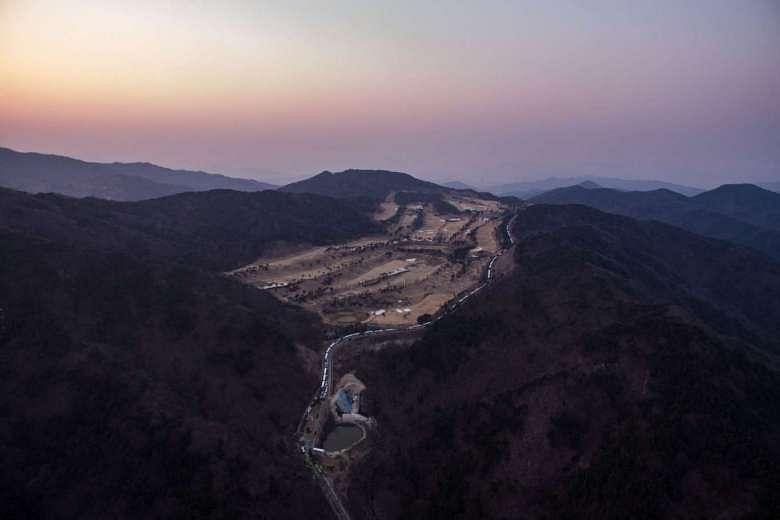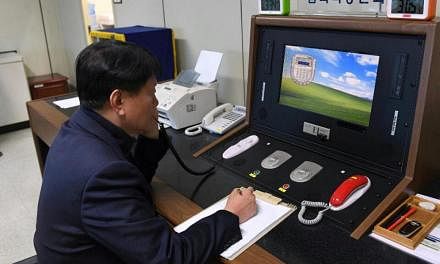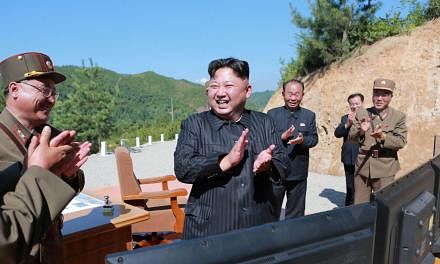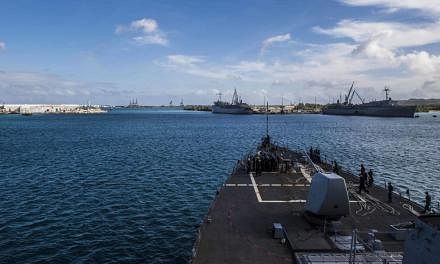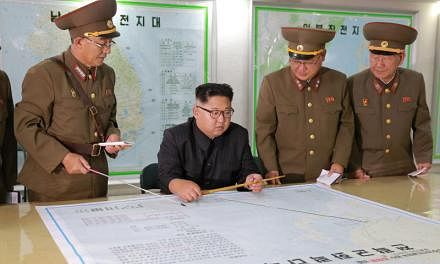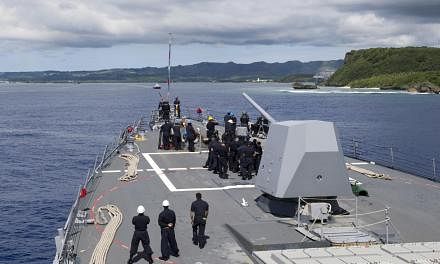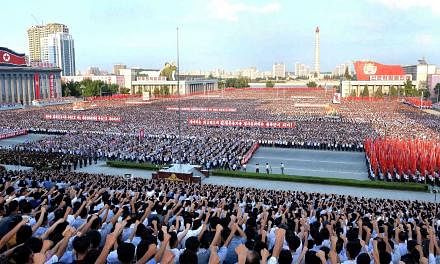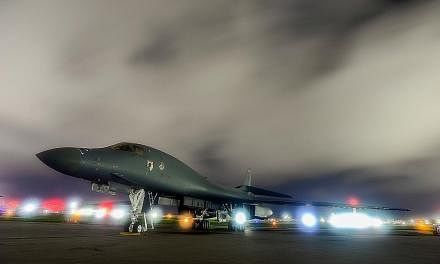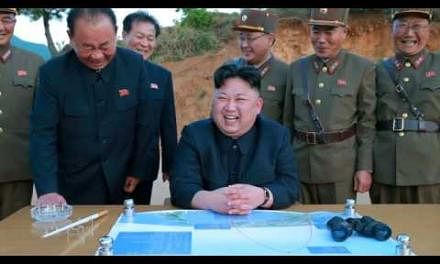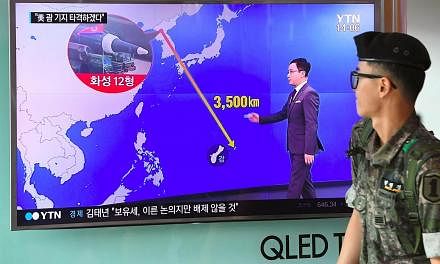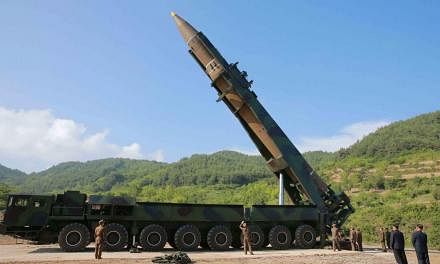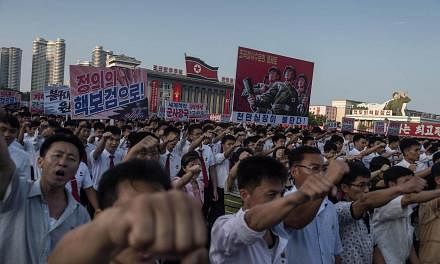The Thaad missile defence system at Seongju, about 250km south of the capital Seoul, will provide cover for most of the major US military bases in South Korea.
Coverage will also extend from Busan to the southern tip of Seoul.
Assuming the United States' Terminal High Altitude Area Defence (Thaad) interceptor's operation range is 200km, news website NK News reported, a system at Seongju will provide cover for most of the major American bases.
These include Camp Humphreys at Pyeongtaek, Osan Air Base at Songtan, Kunsan Air Base at Kunsan and Camp Walker at Daegu.
Most of South Korean major military commands will also be covered, but not the densely populated Seoul metropolitan area.
A former high-ranking South Korean military officer told NK News under condition of anonymity that Seoul will not be a top defence priority in case of an attack.

He said: "During a possible war with North Korea, places like Yongsan, where South Korea's Defence Ministry and US Forces Korea's headquarters are located, would be the North's primary target for strikes.
"So once chances of... war are certain, every major office and VIP would evacuate.
"So strategically speaking, there would not be many major assets left in Seoul to be struck by North Korean weapon systems."
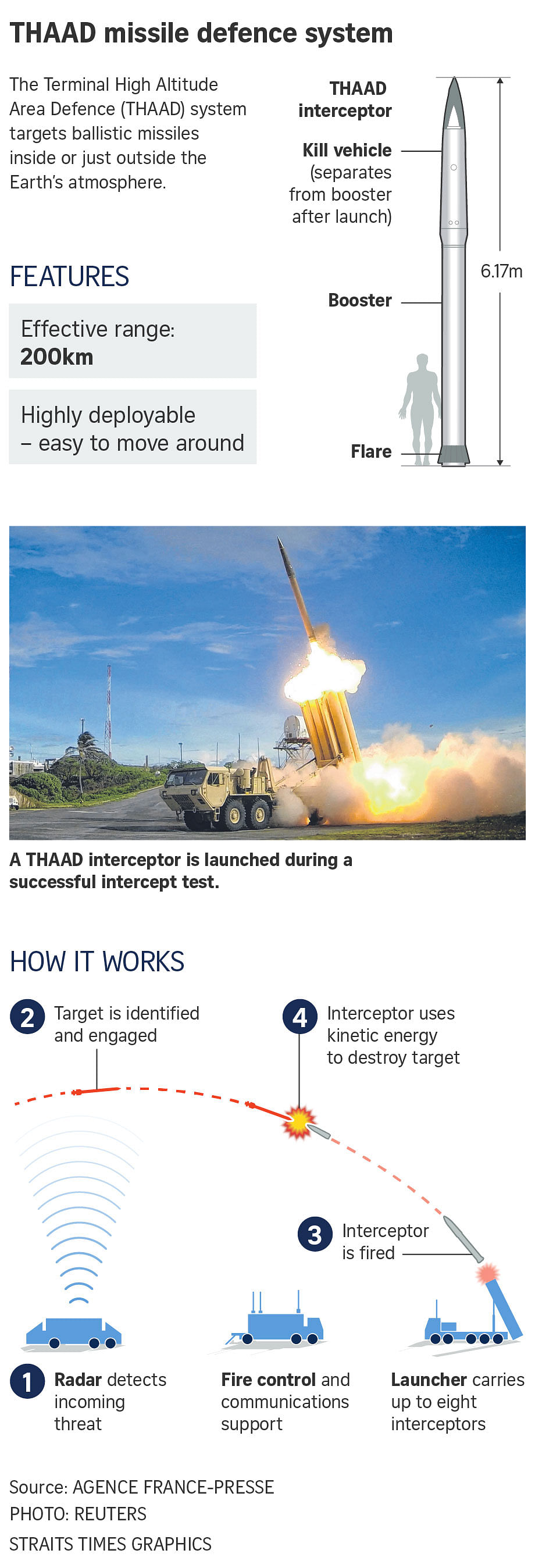
NK News director of intelligence John Grisafi said Seongju is out of range for some of the North's weapon systems, although these still cover most of South Korea.
"(Thaad in Seongju) definitely covers most of the major airbases and lines of communication and supply in the country. It also places the Thaad battery beyond the range of many of the North's more proven weapons, such as its long-range artillery and even the KN-02 ER," he said.
From Seongju, Thaad's X-band radar pointed north would cover most of North Korea, the tip of Shannon peninsula and some China- North Korea border cities.
Mr Cha Du Hyeogn, crisis information adviser to former South Korean president Lee Myung Bak, told NK News that having the radar at Seongju to track North Korea's projectiles would still contribute to the defence of Seoul generally.
Also, he said the Thaad interceptors are mobile and could still be deployed closer to Seoul if needed.



